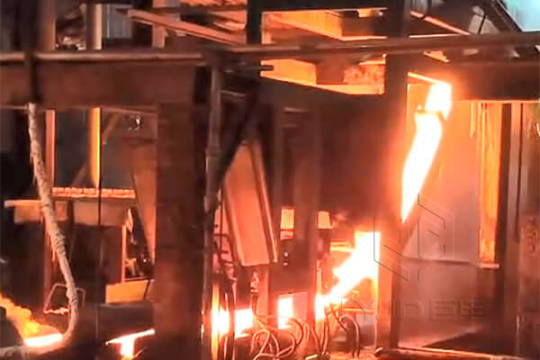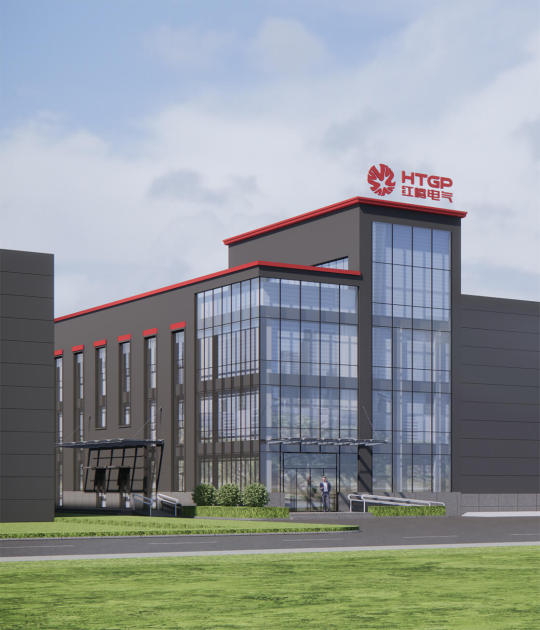#induction heating furnace
Explore tagged Tumblr posts
Text
Steel mill machines
Iron production and steel production are vital processes in the modern industrial world, serving as foundational elements in construction, manufacturing, transportation, and various other sectors. Here are some key applications for both iron and steel:

Iron production applications:
put up:
Basically iron is widely used for building structural purposes. It is used in beams, columns and steel bars in concrete structures.
Machinery and Tools:
Of course, because iron is a key material for manufacturing machinery and equipment in various industries such as agricultural machinery, mining equipment and industrial machinery.
Cars:
Iron is widely used in the automotive industry to make engine blocks, cylinder heads, suspension components and other structural components.
Pipeline:
Iron pipes are commonly used to transport water, natural gas and oil.
household items:
Iron is widely used in a variety of household products, including appliances, utensils, and fixtures.
Steel production applications:
put up:
Its high strength-to-weight ratio makes it ideal for high-rise buildings and long-span structures.
car:
Steel is a key material in automobile manufacturing, used in body panels, chassis components, and safety features such as airbags and seat belt reinforcements.
Mechanical equipment:
Steel is the primary material used in the construction of heavy machinery, tools and equipment used in various industries including construction, agriculture, mining and manufacturing.
Packaging:
Likewise steel is used in packaging materials such as food and beverage cans, aerosol containers and chemical drums.
Energy sector:
Steel is used to build pipelines, storage tanks and offshore platforms for the oil and gas industry, as well as wind turbines and solar panels for renewable energy applications.
Household equipment:
Likewise due to its durability and corrosion resistance, steel is used in the manufacture of home appliances such as refrigerators, stoves, washing machines, and dishwashers.
Steel plays an integral role in modern society and is the backbone of infrastructure, manufacturing and everyday products. Their versatility, strength and durability make them important materials for a variety of applications.
#induction furnace#hot rolling mill#induction heating furnace#induction melting#rolling mills#rolling mill#aluminum#aluminum melting furnace#continuous casting machine#furnace
0 notes
Text
You Don't Want a Gas Stovetop
vlogbrothers, Hank Green
youtube
.







.
Transcript (emphasis mine):
Good morning, John. I've had a half a cup of coffee, and I'm going to do something I almost never do I'm going to make an unscripted video about a thing that I care very passionately about
You watching this video need to not want a gas stove
Why? Because they suck!
Here's the thing that you are right about. The curlicue heating element stoves, they are the worst. They're hard to clean, they're extremely hard to control, like you cannot turn them on and off quickly. They take forever to heat up, they take forever to cool down
Now what happened is the stove top and natural gas industry made it so that what takes the place of that in your brain is a natural gas stove that has like the little blue flames – they're so beautiful – that like Gordon Ramsay used. But what you're doing when you have a natural gas stove is burning stuff in your home! Which results in, get this, decreased indoor air quality. How you can get around this by like having your fume hood like going full blast and certainly never have a natural gas stove that doesn't have a hood. Or get this?! You can have an induction stovetop that has more power and is easier to control than natural gas!
Chances are, there are three pipes connected to your house. There's the one that brings you water, that one's important. The one that takes the water away, we also want that. And the one that brings you methane. What century is this?!
It would be like having the gas station bring the gasoline directly to your car. Like this is a bad idea!
Now I know what you're thinking, “Hank. There is no way that cooking my hellofresh is significantly adding to climate change.” And you're right
But here's the thing, household natural gas use is a big contributor to climate change, it's just not mostly the stove top. However when natural gas companies ask people how they feel about switching their furnace from gas to electric or their water heater from gas to electric, they're like, “I don't care, whichever is better, I don't know.” Because you currently have a really efficient way to get power into your home that isn't a pipe full of methane! It's a power line! And there are great electric water heaters, and there are great electric furnaces and heat pumps, but people say, “I want my natural gas stove.” But that's a tiny percentage of the methane that is actually being sold by the gas company. Almost all of it is used in furnaces and water heaters. But as long as people are like, “I want to keep my gas stove, it's harder to clean, it makes the air inside my house dirty, but House Hunters says that it's a top tier product,” people will keep having the natural gas companies build and replace this extremely expensive infrastructure to pipe gas into our homes!
And gas companies are freaking out about this. They're doing all these campaigns about how great gas ranges are, even though they are objectively worse. Because if they can keep that toehold, they can make it make sense to keep giving you gas for those other things that electric could easily replace. But look electric could also easily replace your stove, because induction stove tops are better than gas!
And so one of the most important things that you can do as a person who's concerned about climate change is take the little thing out of your brain that says, “gas stoves are the best kind of stove,” and look at it and be like, “you're a freaking idiot.” Then you throw it onto your induction stove top and nothing happens, because that's not how it works. It induces the heat in the pan. The stove top itself doesn't get hot cuz they're amazing. So you have to put it into a pan, put that on the stove top, fry it up, and have it with butter … This is why I script. That right there, is why I script, so that doesn't happen!
…
It's not important that you replace your gas stove right now. In fact, it's probably best that you don't. It's important that you don't think it's better than induction because it's not. Because at some point in the future, someone's going to knock on your door and say, “This area is about to have its natural gas pipes replaced, and we have to decide whether or not to replace them with infrastructure that will last 60 to 80 years.” And if a bunch of people in your neighborhood say, “Well, I would, but I really like my gas stove top,” it's not going to happen, and we're going to keep burning methane in people's houses for 80 years! I would be sympathetic if gas were better but it's not!
#i post#i link#youtube#i gif#badly but hey i did it#i transcribe#gas#gas stove#induction stove#stovetop#environmentalism#climate change#hank green#You Don't Want a Gas Stovetop#vlogbrothers#furnace#gas furnace#gas line#gas main#natural gas#gas water heater#methane#heat pump#Youtube
6 notes
·
View notes
Text
Where Can You Find Quality Cooktop Technology?

In the modern culinary landscape, where efficiency, safety, and sustainability are top priorities, advanced cooktop technology has revolutionized kitchens worldwide. Among these advancements, induction cooktop technology stands out as a game-changer, offering unparalleled benefits to both home chefs and professional kitchens. As the demand for cutting-edge solutions grows, Morcom Induction Pvt. Ltd. has emerged as a trusted leader, providing state-of-the-art cooktop technology for businesses seeking reliable and innovative kitchen equipment.
1. What Makes Induction Cooktop Technology Superior?
Induction cooktops use electromagnetic energy to directly heat cookware, without open flames or traditional heating elements. It provides an array of benefits that makes induction technology the first preference in most modern kitchens.
Key Advantages of Induction Cooktop Technology
Energy Efficiency: Induction cooktops directly transfer energy to the cookware, thus reducing the wastage of heat and using less energy.
Faster Cooking: With rapid heating and precise temperature control, cooking becomes significantly quicker and more efficient.
Safety Features: The cooktop surface remains cool to the touch, reducing the risk of burns. Automatic shutoff functions also improve safety by preventing overheating.
Sleek Design: Induction cooktops have a minimalist, modern look that matches contemporary kitchen interiors.
2. The Significance of Quality Cooktop Technology Selection
The key in cooktop technology to assure performance, durability, and satisfactory usage lies in quality. In the business world, quality equipment does not mean a luxury; it's rather an operational strategy for efficiency and customer satisfaction.
Why Prioritize Quality Over Cost:
Performance: A quality cooktop gives the same performance all day, resulting in less down time and less maintenance issues.
Durability: It lasts long and has a better value proposition over the years due to its material and craftsmanship.
Reputation: For B2B distributors and restaurants, a trustworthy technology is a reputation-enhancer that helps win customers' trust.
3. How to Get Quality Induction Cooktop Technology?
It's also necessary to find the right manufacturer if your investment in induction technology will bring back returns as expected. The following are the factors to consider when making a choice.
Factors to Consider When Choosing a Manufacturer
Reputation: Consider the manufacturers with a history of accomplishment and great customer reviews.
Certifications: Ensure compliance with industry standards and certifications for safety and quality.
Product Range: A diverse selection of models and customization options caters to various business needs.
Why Choose Morcom Induction Pvt. Ltd.:
Expertise: With years of experience in induction cooktop manufacturing, Morcom Induction offers unparalleled knowledge and technical proficiency.
Innovation: The company prioritizes cutting-edge technology, ensuring reliable and efficient products.
Sustainability: Committed to eco-friendly practices, Morcom Induction integrates sustainability into its manufacturing processes.
4. Benefits of Being a Morcom Induction Partner
With Morcom Induction as your supplier, you have much more than top-of-the-line cooktop technology: you have a reliable partner committed to your success.
Benefits of Partnership with Morcom Induction:
Solutions Designed Specifically: Products that can be tailor-made to satisfy the precise requirements of B2B kitchen equipment distributors and professional kitchens.
Support through Every Stage: Detailed technical support and post-sales assistance to ensure smooth functionality.
Proven Track Record: Case studies and testimonials from satisfied clients highlight the commitment of the company to excellence.
5. How to Get Started with Morcom Induction
Partnering with Morcom Induction is easy and designed to help you access the best in cooktop technology. Here's how you can begin:
Explore the Product Catalog: Browse through the extensive range of induction cooktop models to find the perfect fit for your needs.
Consult the Sales Team: Contact for customized support and advice based on your business needs.
Request a Demo: Try out the technology by way of product demonstrations or sample units.
Conclusion
This step will allow the company to achieve kitchen efficiency, safety, and sustainability in their kitchen setup. Morcom Induction Pvt. Ltd. stands as an ideal partner to be selected by any distributor or business which needs innovative solutions combined with proven expertise along with customer satisfaction.Take the next step in revolutionizing your kitchen equipment offerings. Visit Morcom Induction's website or contact the team today to learn more and discover how you can enhance your business with state-of-the-art induction cooktop technology.
#induction cooker technology#induction manufacturer#induction cooktop manufacturers#induction manufacturer in delhi#induction manufacturer in india#induction heating machine manufacturer#induction hardening machine manufacturers#induction heater manufacturers in india#homemade induction cooker#homemade induction furnace#induction coil suppliers#induction cooktop manufacturers in india#induction cooktop technology#induction furnace electrotherm#induction furnace manufacturers
0 notes
Text
"The man who has called climate change a “hoax” also can be expected to wreak havoc on federal agencies central to understanding, and combating, climate change. But plenty of climate action would be very difficult for a second Trump administration to unravel, and the 47th president won’t be able to stop the inevitable economy-wide shift from fossil fuels to renewables.
“This is bad for the climate, full stop,” said Gernot Wagner, a climate economist at the Columbia Business School. “That said, this will be yet another wall that never gets built. Fundamental market forces are at play.”
A core irony of climate change is that markets incentivized the wide-scale burning of fossil fuels beginning in the Industrial Revolution, creating the mess humanity is mired in, and now those markets are driving a renewables revolution that will help fix it. Coal, oil, and gas are commodities whose prices fluctuate. As natural resources that humans pull from the ground, there’s really no improving on them — engineers can’t engineer new versions of coal.
By contrast, solar panels, wind turbines, and appliances like induction stoves only get better — more efficient and cheaper — with time. Energy experts believe solar power, the price of which fell 90 percent between 2010 and 2020, will continue to proliferate across the landscape. (Last year, the United States added three times as much solar capacity as natural gas.) Heat pumps now outsell gas furnaces in the U.S., due in part to government incentives. Last year, Maine announced it had reached its goal of installing 100,000 heat pumps two years ahead of schedule, in part thanks to state rebates. So if the Trump administration cut off the funding for heat pumps that the IRA provides, states could pick up the slack.

Local utilities are also finding novel ways to use heat pumps. Over in Massachusetts, for example, the utility Eversource Energy is experimenting with “networked geothermal,” in which the homes within a given neighborhood tap into water pumped from underground. Heat pumps use that water to heat or cool a space, which is vastly more efficient than burning natural gas. Eversource and two dozen other utilities, representing about half of the country’s natural gas customers, have formed a coalition to deploy more networked geothermal systems.
Beyond being more efficient, green tech is simply cheaper to adopt. Consider Texas, which long ago divorced its electrical grid from the national grid so it could skirt federal regulation. The Lone Star State is the nation’s biggest oil and gas producer, but it gets 40 percent of its total energy from carbon-free sources. “Texas has the most solar and wind of any state, not because Republicans in Texas love renewables, but because it’s the cheapest form of electricity there,” said Zeke Hausfather, a research scientist at Berkeley Earth, a climate research nonprofit. The next top three states for producing wind power — Iowa, Oklahoma, and Kansas — are red, too.
State regulators are also pressuring utilities to slash emissions, further driving the adoption of wind and solar power. As part of California’s goal of decarbonizing its power by 2045, the state increased battery storage by 757 percent between 2019 and 2023. Even electric cars and electric school buses can provide backup power for the grid. That allows utilities to load up on bountiful solar energy during the day, then drain those batteries at night — essential for weaning off fossil fuel power plants. Trump could slap tariffs on imported solar panels and thereby increase their price, but that would likely boost domestic manufacturing of those panels, helping the fledgling photovoltaic manufacturing industry in red states like Georgia and Texas.
The irony of Biden’s signature climate bill is states that overwhelmingly support Trump are some of the largest recipients of its funding. That means tampering with the IRA could land a Trump administration in political peril even with Republican control of the Senate, if not Congress. In addition to providing incentives to households (last year alone, 3.4 million American families claimed more than $8 billion in tax credits for home energy improvements), the legislation has so far resulted in $150 billion of new investment in the green economy since it was passed in 2022, boosting the manufacturing of technologies like batteries and solar panels. According to Atlas Public Policy, a research group, that could eventually create 160,000 jobs. “Something like 66 percent of all of the spending in the IRA has gone to red states,” Hausfather said. “There certainly is a contingency in the Republican party now that’s going to support keeping some of those subsidies around.”
Before Biden’s climate legislation passed, much more progress was happening at a state and local level. New York, for instance, set a goal to reduce its greenhouse gas emissions from 1990 levels by 40 percent by 2030, and 85 percent by 2050. Colorado, too, is aiming to slash emissions by at least 90 percent by 2050. The automaker Stellantis has signed an agreement with the state of California promising to meet the state’s zero-emissions vehicle mandate even if a judicial or federal action overturns it. It then sells those same cars in other states.
“State governments are going to be the clearest counterbalance to the direction that Donald Trump will take the country on environmental policy,” said Thad Kousser, co-director of the Yankelovich Center for Social Science Research at the University of California, San Diego. “California and the states that ally with it are going to try to adhere to tighter standards if the Trump administration lowers national standards.”
[Note: One of the obscure but great things about how emissions regulations/markets work in the US is that automakers generally all follow California's emissions standards, and those standards are substantially higher than federal standards. Source]
Last week, 62 percent of Washington state voters soundly rejected a ballot initiative seeking to repeal a landmark law that raised funds to fight climate change. “Donald Trump’s going to learn something that our opponents in our initiative battle learned: Once people have a benefit, you can’t take it away,” Washington Governor Jay Inslee said in a press call Friday. “He is going to lose in his efforts to repeal the Inflation Reduction Act, because governors, mayors of both parties, are going to say, ‘This belongs to me, and you’re not going to get your grubby hands on it.’”
Even without federal funding, states regularly embark on their own large-scale projects to adapt to climate change. California voters, for instance, just overwhelmingly approved a $10 billion bond to fund water, climate, and wildfire prevention projects. “That will be an example,” said Saharnaz Mirzazad, executive director of the U.S. branch of ICLEI-Local Governments for Sustainability. “You can use that on a state level or local level to have [more of] these types of bonds. You can help build some infrastructure that is more resilient.”
Urban areas, too, have been major drivers of climate action: In 2021, 130 U.S. cities signed a U.N.-backed pledge to accelerate their decarbonization. “Having an unsupportive federal government, to say the least, will be not helpful,” said David Miller, managing director at the Centre for Urban Climate Policy and Economy at C40, a global network of mayors fighting climate change. “It doesn’t mean at all that climate action will stop. It won’t, and we’ve already seen that twice in recent U.S. history, when Republican administrations pulled out of international agreements. Cities step to the fore.”
And not in isolation, because mayors talk: Cities share information about how to write legislation, such as laws that reduce carbon emissions in buildings and ensure that new developments are connected to public transportation. They transform their food systems to grow more crops locally, providing jobs and reducing emissions associated with shipping produce from afar. “If anything,” Miller said, “having to push against an administration, like that we imagine is coming, will redouble the efforts to push at the local level.”
Federal funding — like how the U.S. Forest Service has been handing out $1.5 billion for planting trees in urban areas, made possible by the IRA — might dry up for many local projects, but city governments, community groups, and philanthropies will still be there. “You picture a web, and we’re taking scissors or a machete or something, and chopping one part of that web out,” said Elizabeth Sawin, the director of the Multisolving Institute, a Washington, D.C.-based nonprofit that promotes climate solutions. “There’s this resilience of having all these layers of partners.”
All told, climate progress has been unfolding on so many fronts for so many years — often without enough support from the federal government — that it will persist regardless of who occupies the White House. “This too shall pass, and hopefully we will be in a more favorable policy environment in four years,” Hausfather said. “In the meantime, we’ll have to keep trying to make clean energy cheap and hope that it wins on its merits.”"
-via Grist, November 11, 2024. A timely reminder.
#climate change#climate action#climate anxiety#climate hope#united states#us politics#donald trump#fuck trump#inflation reduction act#clean energy#solar power#wind power#renewables#good news#hope
2K notes
·
View notes
Text

New type horizontal type all-in-one induction heating machine, induction heating furnace, induction forging furnace. 200KW.300KW.400KW ...1000KW can customized. Steel rod induction heating ,automatic feeding round bar induction heating equipment.
0 notes
Text
Tesla Induction Engineering with decades of experience with Induction Furnace Erection and Induction Billet Heater, Induction Coil, Induction Water Cooled Cables manufacturers in Chennai.
1 note
·
View note
Text
I had a lot of fun trying out forging. I kind of want to build an induction furnace so I can do at-home blacksmithing without using a lot of space. And it would be way less hot since 1) it doesn't heat the surrounding air and 2) there's no temperature ramp up time; you just turn it on when you need to heat the metal and then immediately turn it off.
10 notes
·
View notes
Text

Ammonia induction strategy for preparation of transition metal oxides / zeolite H₂S adsorbent
Blast furnace gas (BFG) is an important by-product energy for the iron and steel industry and has been widely used for heating and electricity generation. However, the undesirable contaminants, such as COS, CS2, and H2S, in BFG generate harmful environmental emissions. Due to the stringent ultra-low emission standards, the desulfurization of BFG is urgent for integrated steel plants. Compared with other desulfurization materials, zeolite-based adsorbents represent a viable option with low costs and long service life. However, the sulfur capacity of zeolite is relatively low and needs to improve. Impregnation of transition metal oxides onto zeolite is a common strategy to prepare H2S adsorbent. However, this method usually results in the agglomeration of metal particles during calcination, forming relatively large metal particles. The large metal particle may increase the gas diffusion resistance in adsorbent and inhibit the desulfurization performance. Therefore, minimizing the metal particles on zeolite with a high loading is the key to the preparation of an adsorbent with high sulfur capacity.
Read more.
11 notes
·
View notes
Text
Rigid Mica Sheets Insulation | Axim Mica
Mica Sheets are the foundation from which mica parts are made. Depending on your application, the correct mica sheet for an application depends on the material: Muscovite, or Phlogopite. Depending on the level of heat resistance needed, the thickness of mica sheet will also vary. Mica sheets are not uniform, and they can be ordered in various sizes and different degrees of smoothness based on the needs of the customer.

Mica Sheets Application:
Ax-THERM M & P mica sheets are used for high-performance thermal and electrical insulation in a broad range of industries such as
Heating elements for electrical & thermo mechanical equipment
Construction of induction, arc or high frequency furnaces
High voltage applications
High thermal applications
Industrial sealing & gasket industries (e.g. oil & gas distribution)
Ax-THERM M & P mica sheets are the ideal alternative for asbestos insulations.
Good resistance to high temperatures & chemicals, low heat conductivity, high dielectric strength, good high-voltage proof performance. Fire resistance classification UL94 (94 V-0), BS 479 (class 1), NBN 21-203 (A1).
2 notes
·
View notes
Text
What is metal induction melting
Induction metal melting is a process that uses electromagnetic induction to melt metal.

In this method, high-frequency alternating current is passed through a coil, creating a rapidly changing magnetic field.
If a conductive material such as a metal is placed in this magnetic field, eddy currents are induced in the material.
These eddy currents generate heat due to the material's electrical resistance, causing the material to heat up rapidly and eventually melt.
The process is commonly used in industries such as foundries and metalworking to melt a variety of metals, including steel, iron, copper and aluminum.
It offers the advantages of efficient heating, precise temperature control, and the ability to melt metal quickly and evenly.
Additionally, it can be used in both small and large metal smelting operations. How does an induction cooker work?
An induction furnace is an energy-efficient, clean furnace used for melting all types of metals, including steel, iron, copper, zinc and aluminum.
Since an induction furnace does not require an electric arc, the heat of melting can be easily adjusted, making it a suitable choice for preserving valuable alloying elements. Additionally, these types of ovens produce minimal waste and pollutants, helping to reduce your overall carbon footprint.
The principle of induction furnace Faraday's law describes how a magnetic field interacts with a circuit to produce an electromotive force, a phenomenon called electromagnetic induction.
Therefore, once a piece of conductive material (such as the charge in a furnace or a load) is placed in a changing magnetic field, an electric current is produced. When electricity flows, it encounters resistance and dissipates energy in the form of heat through the Joule effect.
Types of induction cookers There are two types of induction cooktops, each with specific requirements:
Core induction furnace An iron core (or trough) induction furnace acts as a transformer (at the mains frequency), thereby transferring electrical energy from one AC circuit to another. In a trough induction furnace, alternating current flows through a primary coil surrounding an iron core.
The secondary coil is made from a ring of molten metal surrounding the core and primary coil. When current flows through the primary, a larger current is induced in the secondary, which then generates heat through the Joule effect.
Channel furnaces meet the needs of high-volume, high-volume operations requiring small alloy changes, as well as continuous casting projects. Due to constant operating conditions and temperatures, the service life of a refractory lining can last for years and thousands of operations. Channel furnaces are commonly used to melt certain alloys, iron, aluminum, zinc and copper.
Coreless induction cooker Coreless induction furnaces can also be operated via a transformer. However, the secondary coil is omitted. The primary coil is a water-cooled copper coil surrounding a crucible or refractory lining containing the metal charge. The primary coil therefore induces current directly into the metal charge.
In addition, frequent alloy changes and repeated cooling and heating operations can also shorten the life of the refractory lining. However, coreless refractory liners are also significantly cheaper and faster to replace.
Induction furnace refractory lining Furnace lining refractory materials play a vital role in the smooth operation of induction furnaces. Stable refractory lining for optimal metallurgical performance. As a consumable pad
0 notes
Text
More info below. Thanks for posting, OP! I've been meaning to get this article up myself, but I haven't had the time, so this is perfect!
"“This is bad for the climate, full stop,” said Gernot Wagner, a climate economist at the Columbia Business School. “That said, this will be yet another wall that never gets built. Fundamental market forces are at play.”
A core irony of climate change is that markets incentivized the wide-scale burning of fossil fuels beginning in the Industrial Revolution, creating the mess humanity is mired in, and now those markets are driving a renewables revolution that will help fix it. Coal, oil, and gas are commodities whose prices fluctuate. As natural resources that humans pull from the ground, there’s really no improving on them — engineers can’t engineer new versions of coal.
By contrast, solar panels, wind turbines, and appliances like induction stoves only get better — more efficient and cheaper — with time. Energy experts believe solar power, the price of which fell 90 percent between 2010 and 2020, will continue to proliferate across the landscape. (Last year, the United States added three times as much solar capacity as natural gas.) Heat pumps now outsell gas furnaces in the U.S., due in part to government incentives. Last year, Maine announced it had reached its goal of installing 100,000 heat pumps two years ahead of schedule, in part thanks to state rebates."
-via Grist, November 11, 2024
From the article:
“Texas has the most solar and wind of any state, not because Republicans in Texas love renewables, but because it’s the cheapest form of electricity there,” said Zeke Hausfather, a research scientist at Berkeley Earth, a climate research nonprofit. The next top three states for producing wind power — Iowa, Oklahoma, and Kansas — are red, too. [...] “You picture a web, and we’re taking scissors or a machete or something, and chopping one part of that web out,” said Elizabeth Sawin, the director of the Multisolving Institute, a Washington, D.C.-based nonprofit that promotes climate solutions. “There’s this resilience of having all these layers of partners.” All told, climate progress has been unfolding on so many fronts for so many years — often without enough support from the federal government — that it will persist regardless of who occupies the White House. “This too shall pass, and hopefully we will be in a more favorable policy environment in four years,” Hausfather said. “In the meantime, we’ll have to keep trying to make clean energy cheap and hope that it wins on its merits.”
2K notes
·
View notes
Text
All About Furnace Replacement: Cost and When to Do It - heating services
Most ground-source heatpump devices are covered by a 1 year service warranty on parts and work, and some producers supply prolonged service warranty programs. However, warranties range producers, so make sure to inspect the small print. Lastly, the turning around valve guides the now-hot gas to the condenser coil, where it quits its warmth to the air or hydronic system to heat the home.
Other than yearly upkeep, there are a few straightforward things you can do to make sure trustworthy and efficient operations.
For instance, a system might have reduced ahead of time prices yet higher running costs-- the energy celebrity sticker label can aid offer an indicator of what each system could set you back to run.
The step-by-step cost of such a system can be recouped with power expense savings over a duration as reduced as 5 years.
What Is The Warm Resource Of The Heat Pump Water Hot Spring?

This overview, in addition to a friend software application device, is planned for energy consultants and mechanical developers, and is easily available to provide support on appropriate sizing. As a matter of fact, they're typically used as an all-in-one heating and cooling remedy since they supply home heating, cooling, air filtering system, and dehumidification for your home. They are up to 3x extra effective than electric furnaces, and they supply all-in-one home heating, cooling, cleansing, and dehumidifying for your home.
Induction Grain Toasting Equipment, For Commercial, Ability: 50 Kg/h

youtube
As the refrigerant passes from the reversing valve to the compressor, the accumulator accumulates any kind of excess fluid that did not vaporize into a gas. Heat pumps can be an excellent choice in a selection of applications, and for both new homes and retrofits of existing home heating and cooling systems. They are additionally an option when changing existing a/c systems, as the step-by-step cost to relocate from a cooling-only system to a heatpump is typically quite low. Provided the wide range of different system types and alternatives, it can usually be hard to determine if a heat pump is the right option for your home. Since they utilize electrical energy to move hot air or water from one location to an additional instead of to generate it, heatpump can supply up to times as much power as they use.
If you have actually been researching heating and cooling heating options for any type of length of time, you recognize there's a dizzying variety to select from. Home heating and "energetic cooling" operations are explained in the adhering to area.
Air-air systems are a lot more efficient when the temperature level difference in between within hvac and outside is smaller. Because of this, air-air heat pumps usually try to maximize their efficiency by providing a greater quantity of cozy air, and heating that air to a lower temperature level (typically between 25 and 45 ° C) . This contrasts with heater systems, which provide a smaller sized volume of air, however heat that air to higher temperatures (between 55 ° C and 60 ° C). If you are changing to a heat pump from a furnace, you might see this when you begin utilizing your new heat pump. The evaporator is a coil in which the cooling agent absorbs warm from its surroundings and boils to come to be a low-temperature vapour.
What are the dangers of a heatpump?
A badly made and set up heatpump can result in all sorts of troubles in the future, such as boosted power expenses, building damage, and insurance coverage effects.
But we're not the just one who recognize that making use of an electrical heat pump vs. gas furnace is usually much more cost-effective for home owners. For a great appearance at the distinctions in home winter season home heating costs based upon heating type (consisting of heatpump!), take a look at this graph from Rewiring America. Cold climate heat pumps, meanwhile, have entirely exceeded electric heaters in regards to efficiency and overall efficiency. All that stated, gas heaters are not virtually as energy-efficient as heatpump, so they'll be a lot more expensive to run and preserve over their life expectancy. ( Did you know that in 2022, gas rates were the highest given that 2008?) And as a result of the fuel gas heating systems use, you may face air quality concerns over the long-term. This type of system can fulfill all cooling down loads and many home heating tons on reduced rate, with high speed needed only for high home heating loads.
Tyger Mechanical Solutions
+15199160882
0 notes
Text
The Benefits of an Induction Melting Furnace

If you are using an induction melting furnace, you are already facing all the advantages it has to offer. Lest you are not, nonetheless, it is the main thing to study what those gains are so you can pick if using it is the best choice for your business.
You are attentive of the advantages of using it. It is viable for you to ascertain your need so you can commence the procedure of purchasing to make your job easier and save money.
Induction heating and melting procedures don’t use up as much energy as further procedures. These types of furnace use an electrical current that goes through copper loops to generate potency and magnetic arena that heats up the material within to dissolve it or then heat it. In plenty of cases, this electrical current doesn’t have to be solid to be effective. This can assist to lessen your energy charges and save you money.
An induction melting furnace uses a combination of hysteresis losses and electrical resistance to heat metal. The furnace heats up the metal by exposing it to the magnetic field across a coil-carrying alternating current. These enclosed structures use induction heating sources to create heat for industrial purposes. The control panel power range is from 40 KW to 2000 KW.
Induction melting furnaces will provide you a heat all over the inner space. This entails you don’t have to fear about warm spots in the furnace or the inability to have a dependable temperature. The time it originates to tender metals, it is important to make positive that the temperature is the similar all over and doesn’t vary. Metals have a precise melting idea, and you have to keep the temperature for the best result.
Along with spending less energy and generating an even heating through the furnace, melting furnace burn cleaner than other types of furnaces. This furnace doesn’t create any vapours when it works as it doesn’t blister fume or other kinds of oils. Instead, it provides you with clean-burning energy that will deliver harmless endeavour surroundings for your workers, and also cut down on the amount of pollution your industry is paying to the ambience.
Moreover, induction heat is right and repeatable to safeguard the quality in your melting procedures. Deciding to use brass melting furnace for your melting needs will impart you an assortment of advantages over other types of furnaces. The heat offering by this type of furnace will be constant and also throughout the furnace so you don’t have to be concerned about rough melting or changeable from the desired temperature. Moreover, you will save funds and the situation with lesser quantity of energy used, and also the detail that the furnace is clean-burning energy. Your workers and the ambience will thank you.
0 notes
Text
#induction heating machine#induction heating equipment#induction forging furnace#induction hardening machine#CNC hardening machine tool
0 notes
Text
Evolution of Industrial Furnace Market: Greener, Smarter, Better
The industrial furnace market stands at a pivotal crossroads, where the demands of productivity meet with urgent environmental imperatives. As manufacturing facilities worldwide grapple with stricter emissions regulations and rising energy costs, new solutions are emerging that promise to rethink about industrial heating processes. In this regard, our research predicts that the Global Industrial Furnace Market is likely to grow with a CAGR of 4.84% in the forecast period 2025-2032.
Advancements in industrial furnace technology are driving the shift toward more efficient heating solutions. Electric furnaces, in particular, are gaining popularity for their high energy efficiency and lower environmental impact. Here’s how market players are keen on the adoption of industrial furnaces for versatile and eco-friendly industrial furnaces.

Explore in detail about this market in our FREE sample
Understanding the Sustainability Challenge
Traditional industrial furnaces, while reliable workhorses of manufacturing, have long been associated with significant energy consumption and greenhouse gas emissions. In fact, industrial heating processes account for approximately 20% of global energy consumption. In steel manufacturing alone, furnaces can consume up to 75% of a plant’s total energy usage. These statistics, therefore, demonstrate the urgent need for more sustainable solutions, leading to a demand for industrial furnaces.
ArcelorMittal’s Hamburg facility is setting a benchmark for sustainable steel production. Currently powered by natural gas, its Direct Reduced Iron (DRI) furnace is paving the way for a green transformation, with plans to transition to green hydrogen in the near future.
“Our site is the most energy-efficient production plant at ArcelorMittal,” says Dr. Uwe Braun, CEO of ArcelorMittal Hamburg. “With the new, hydrogen-based DRI plant we are now planning, we will raise steel production to a completely new level as part of our Europe-wide ambition to be carbon neutral by 2050.”
This initiative showcases how sustainability can reshape heavy industries for a cleaner future.
Industrial Furnace Market: Innovative Solutions in Energy Efficiency
Modern furnace design has evolved dramatically, incorporating sophisticated heat recovery systems and advanced insulation materials. The emergence of hybrid heating technologies represents the most noteworthy development in sustainable furnace operation. These systems combine different heating methods – such as induction and resistance heating – to optimize energy usage based on specific process requirements.
Let us see how leading market players are improving the functionality of furnaces:
SMS group and SSAB are collaborating to revolutionize steel production in Sweden with a cutting-edge electric arc furnace (EAF) as part of SSAB’s decarbonization efforts.
Key features of the project:
Massive Scale: A 190-ton AC-EAF, one of the largest in the world
Fossil-Free Steel: Enables SSAB’s transition to low-emission production
Seamless Integration: Smoothly shifts from traditional to electric steelmaking
High-Quality Output: Delivers premium liquid steel efficiently
This project cements SMS and SSAB as leaders in sustainable, future-ready steelmaking.
An innovative approach has been demonstrated by Japanese manufacturer Nippon Steel, which has implemented regenerative burner systems that capture and reuse waste heat. This technology has shown the potential to reduce fuel consumption by up to 50% in some applications while significantly lowering NOx emissions.
Another notable advancement comes from German manufacturer Schwartz GmbH, which has developed a series of vacuum furnaces utilizing advanced thermal insulation and precise temperature control systems. Their latest models have shown a 40% reduction in energy consumption while maintaining or even improving product quality.
Connect with our experts for a simplified analysis!
The Digital Revolution in the Electric Arc Furnaces (EAF)
The integration of Industrial Internet of Things (IIoT) technology is transforming furnace operations from traditional heat approaches to precise, data-driven processes. Computer vision AI is revolutionizing steelmaking, particularly in Electric Arc Furnaces (EAF), by providing real-time insights for optimized operations. Key features include:
Precise control over the melting process
Real-time monitoring of temperature, charge composition, and energy consumption
Enhanced efficiency and resource utilization
Advanced visual analytics for continuous performance evaluation
These capabilities enable improved operational performance, reduced costs, and better decision-making in manufacturing, driving the transformation towards Industry 4.0.
Similarly, electric arc furnaces have taken automation a step further with its ‘Digital Twin’ technology for reheating furnaces.
A digital twin of a furnace is a virtual representation that mirrors its physical counterpart in real time. By integrating sensors, IoT, and advanced analytics, the twin continuously monitors performance, predicts maintenance needs, and identifies inefficiencies. This proactive approach reduces downtime and optimizes operations.
By leveraging Ansys’ digital twin technology alongside its structural, fluid dynamics, and optimization tools, RAUCH has enhanced the monitoring of its furnace crucible. This approach effectively lowers the risk of furnace malfunctions by continuously assessing performance and identifying potential issues before they lead to failure.
Companies like RAUCH, Siemens, and GE have used digital twins for industrial equipment, including furnaces, enhancing reliability and sustainability. These innovations are transforming manufacturing and maintenance strategies across industries.
Future Prospects for the Industrial Furnace Market
The future of industrial furnaces lies in the convergence of these technologies. While these advances come with significant initial investment costs, the long-term benefits in terms of reduced operating costs, improved product quality, and environmental compliance make them increasingly attractive to forward-thinking manufacturers. The transformation of industrial furnaces from energy-intensive necessities to smart, sustainable assets represents more than just technological progress – it’s a crucial step toward a more sustainable manufacturing future.
Grab a Quick Read to Know Key Furnace Types
FAQs:
Q.1) What is the highest-temperature industrial furnace?
Answer: MRF offers furnaces designed to operate continuously at ultra-high temperatures of 3000°C (5430°F), a threshold that few materials can withstand. For these extreme conditions, the furnaces utilize hot zones made from specialized materials like Graphite or Tungsten, which are capable of enduring such intense heat.
Q.2) How long does an industrial furnace last?
Answer: The lifespan of an industrial furnace typically ranges from 15 to 30 years, depending on factors like usage, maintenance, and operating conditions. Regular upkeep and timely repairs can help extend its operational life and efficiency.
#EvolutionIndustrialFurnaceMarket#FurnaceMarket#Energy#Power#Utilities#TritonMarketResearch#MarketReport#ResearchReport
0 notes
Text
EN9 Carbon Steel Supplier Mumbai
EN9 carbon steel is a medium carbon steel grade, typically supplied in the as-rolled condition. It is known for its ability to be flame or induction hardened, achieving a high surface hardness while maintaining good wear resistance. EN9 steel can be supplied as round bars, cut to length, or flame cut steel plates, and can be normalized and precision ground to meet customer requirements.
EN9 Grade Application:
EN9 steel is widely used in general engineering applications due to its strength and durability. Typical uses include:
Shafts
Axes
Knives
Bushes
Crankshafts
Screws
Sickles
Woodworking drills
Hammers
EN9 Hardness:
EN9 can achieve Brinell hardness levels in the range of 201-302 HBW, depending on the condition and heat treatment.
EN9 Heat Treatment:
Heat treatment parameters such as heating rate, cooling rate, and soaking time will depend on the size and shape of the EN9 steel component. Factors such as the type of furnace, quenching medium, and workpiece transfer methods also play an important role.
EN9 Hardening:
For hardening, heat the EN9 steel slowly to 820-840°C and allow the steel to be thoroughly heated. Quenching can be done in oil, brine, or water.
EN9 Tempering:
After quenching, tempering should be performed immediately while the component is still warm. Reheat to the tempering temperature (usually 550-660°C), soak for one hour per 25 mm of thickness, and allow to cool in air.
EN9 Physical Properties:
EN9 possesses good strength, ductility, and wear resistance, making it ideal for demanding applications.
EN9 Thermal Properties:
EN9 steel can withstand moderate thermal conditions but will require tempering after hardening to maintain stability in variable temperatures.
EN9 Carbon Steel Supplier Mumbai
0 notes